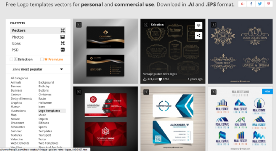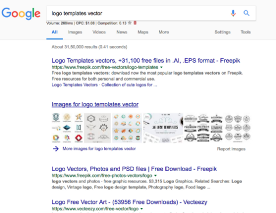Last week when I joined an investment and consulting firm in the social sector, I saw corporate groups from the social sector paying huge sums to creative agencies in exchange for templatized designs and mediocre service. In my early days of volunteering for NGOs, I had witnessed how much the social sector struggles by its fundamental nature in terms of investment and capital. In my later days of freelancing, I had come to see how easy it is for “creative agencies” to leverage information-asymmetry to their advantage. The margins made by the agencies is appalling, to say the least, especially when the people behind most of these agencies are not even remotely familiar with design or creativity. In this article, I break down the problem of pricing in a market of asymmetry caused due to the skills involved and its impact on SMEs or other social sector organisations. I subsequently try to introduce a strategy that could possibly pave the way for cheaper “digital marketing” solutions for those who need it big time — the social sector.
Here’s a piece that explores design from a socially responsible PoV.

The majority profits because of the talented few
To say that it’s tough to find value for money in the digital media industry would be an understatement. But let me try to put it in perspective — if 10 people would quote Rs 10,000 for a logo design, there is probably just one of those agencies or designers who will actually make an original design. The others are likely to Google “logo templates vectors”, download a cliched-but-convincible vector from Freepik.com, alter the colour-scheme, alter the text, and deliver! Additionally, they may delay the delivery by a couple of hours to pretend that they are actually putting in efforts for the project.
But templates aren’t the problem — ignorance is!
What is accepted will have a prevailing supply. While the problem largely revolves around incompetent designers, the actual issue is about identifying them. A typical marketing manager, of a company which is having to outsource their creative requirements, hardly knows what goes behind the creation. In fact, more often than not, the majority of social sector organisations and SMEs struggle to have a dedicated marketing manager in the first place. Call it ignorance or call it lack of awareness, the highlighted issue, herein, is the fact that managers do not have the knowledge of what the design process is, how the backend of the web-design works, or how an original design differs from a cliched copy. And they’re not to blame, by the way, it’s not their job. They weren’t hired as a Brand Consultant or a Senior Designer or a Digital Strategist. Whose job is it then?
The money is leaking into the vacuum of a role
The reason why SMEs or NGOs can’t have a dedicated marketing manager is straightforward — they’re not big enough to afford one. Forget full-time, even a part-time independent consultant’s cost is unlikely to be within their budget. However, in my honest opinion, whatever money they are able to save by not having a manager with digital-design knowhow, they lose in shelling out money for better quality, that too with the risk of getting duped by a make-believe creative agency. There is only one loser in the entire process of brand-design for the organization, and that is the organization itself. They shell out big money, they spend time coordinating with the agency, and what they eventually get are designs which may look convincing at first, but fail to actually impact in the long run. Why? Because they’re below par in quality, they’re copied, they’re fake, and the company’s point-of-contact does not know how to recognize that. Images that follow show a few such organizations’ logos(names hidden).
Detour — Why good design is fundamental to a strong brand
After all my ranting about poor design and substandard creative services, you’re probably wondering how valuable and impactful good design is, anyway? Of course, there might also be the odd argument that these SMEs and other social sector organisations do not care about the design. However, only someone who is not directly involved with business would have this argument. For anyone who owns a business, knows the veracity of the statement — ‘what looks good, sells well.’
In an era of design savvy audiences, you can’t depend on poorly linked websites and cluttered information in brochures. Neither your targeted customer nor a potential investor has the time to read each and every word of the slides you present or the catalogue you emailed, and that’s where good design comes in. If the absence of an attractive logo and a seamless website is going to cost you a potential funding, I think it’s fair to claim that good design is sacrosanct to a strong brand.
And finally, the solution –
Service Escrows
While the industry has been at a standstill as far as this problem goes, the solution is surprisingly straight-forward. Better yet, it already exists.
Escrow contracts have largely prevailed in the gig economy to ensure fairness of exchange between two parties with the help of a thirty-party. The costs are minimal since the job of the third party is not that of implementation, but only of cross-checking. Here’s how this can be applied to the digital & creative solutions market from an SME perspective:
You as a business owner who does not know much about digital & creative solutions find someone knowledgeable enough, who is willing to escrow. Ideally, this can be a freelance consultant, your techie neighbour, or even a third agency. Include a clause in your final contract which mentions that if the third party is able to prove substantially that the work is below par or is copied, the contract would stand null and void.
But wait, wasn’t the problem about SMEs not being able to afford good services?
It was, indeed. The problem is double-sided. We’ve largely fixed the problem of the demand side by introducing service escrows to mediate contracts. For the supply side, it unfortunately, (or fortunately?) boils down to the sensitivity and conscience of the digital design community. And here is how an agency can profit by cutting down prices for SMEs and social sector organisations:
- You have a long-term client and not a solo deal customer. What agencies tend to ignore is that they are better off establishing long-term relationships than one-off jobs. While this comes at a revenue-cut, given that the costs of running a creative agency are mostly fixed, such revenue-cuts for bigger long-term profits are more than affordable. Obviously, I’m neither asking you to give your services for free nor forcing you to cut prices and end up shutting down due to sustainability issues. Just don’t charge Rs. 1,00,000 for a WordPress website, please!
- Differential pricing folks! I see talented agencies lose deals every day simply because they didn’t consider the client’s willingness to pay when quoting the price. Remember this — if you’re quoting the same prices to a corporate giant and an SME, you are either losing revenue opportunity from the corporate or will end up losing the deal with the SME due to high prices. Devise a bare minimum price that you can charge for each service on offer, and then decide as per the client.
- And finally, design for impact. As a community that champions creativity, it is shocking that we fail to consider the impacts of our designs. My argument is simple — if an NGO is going to benefit in terms of outreach, which in turn will help them achieve their goals, through YOUR designs, you should be proud to cut the prices into half.
And hopefully, the last statement drives home my point — as a community, we must be aiming to sustain clients and bring out substantial changes through our work at the same time. This can only happen through organic outreach and original designs. Design for impact, not for the profits. The impact will bring in the profits through growth in the long run.






